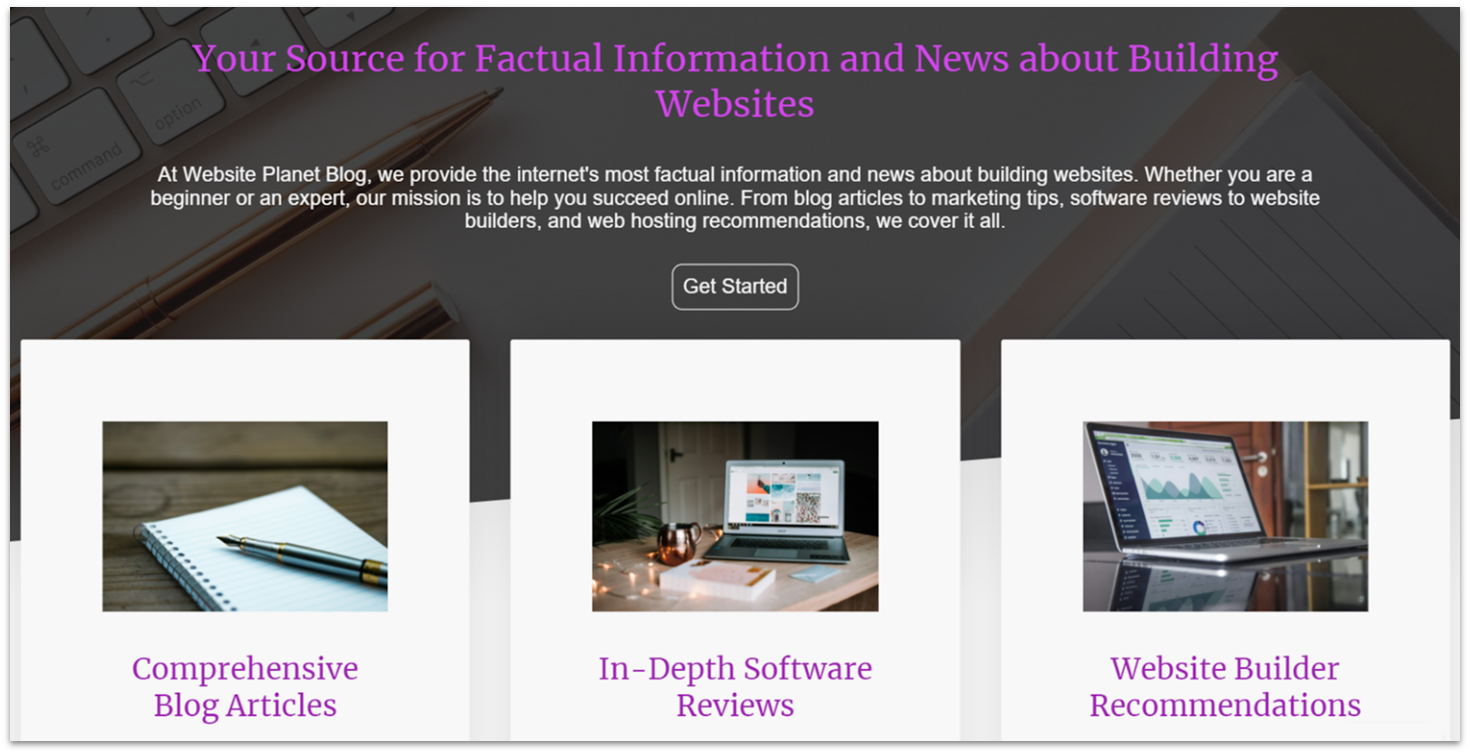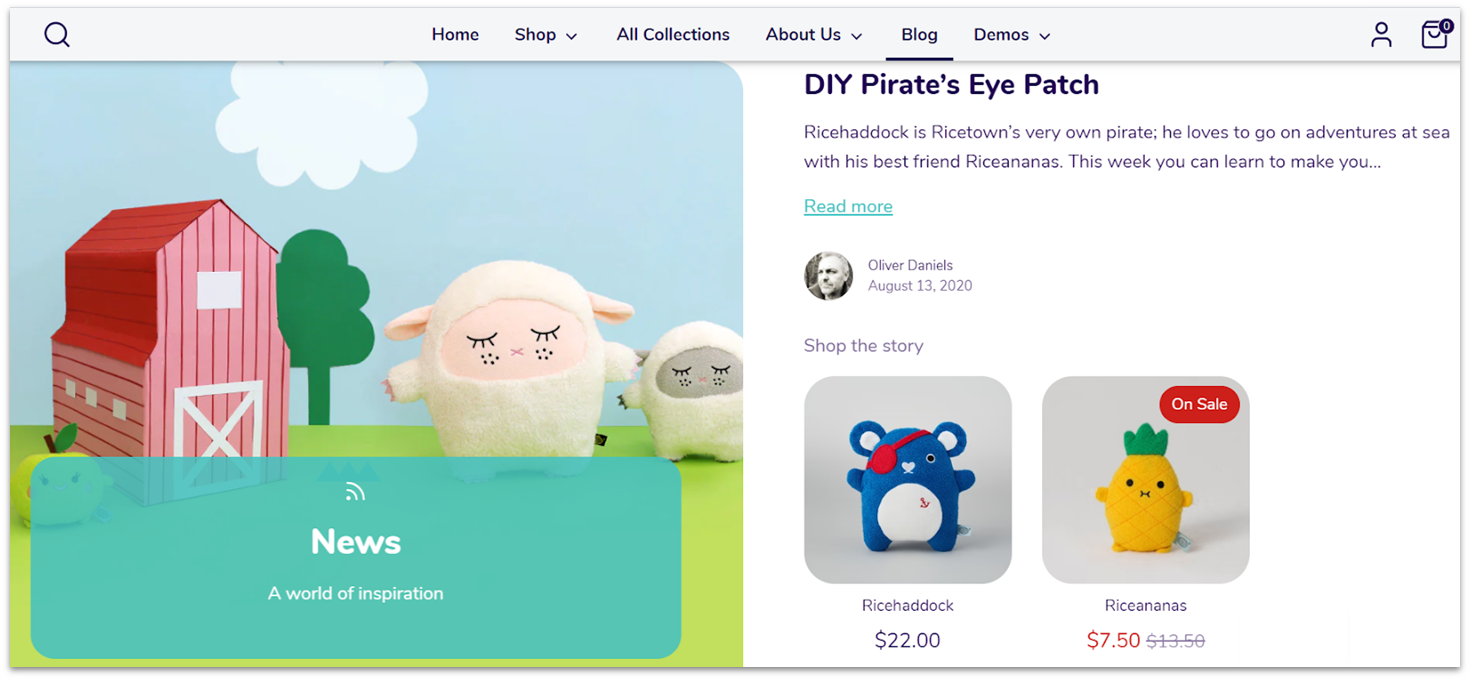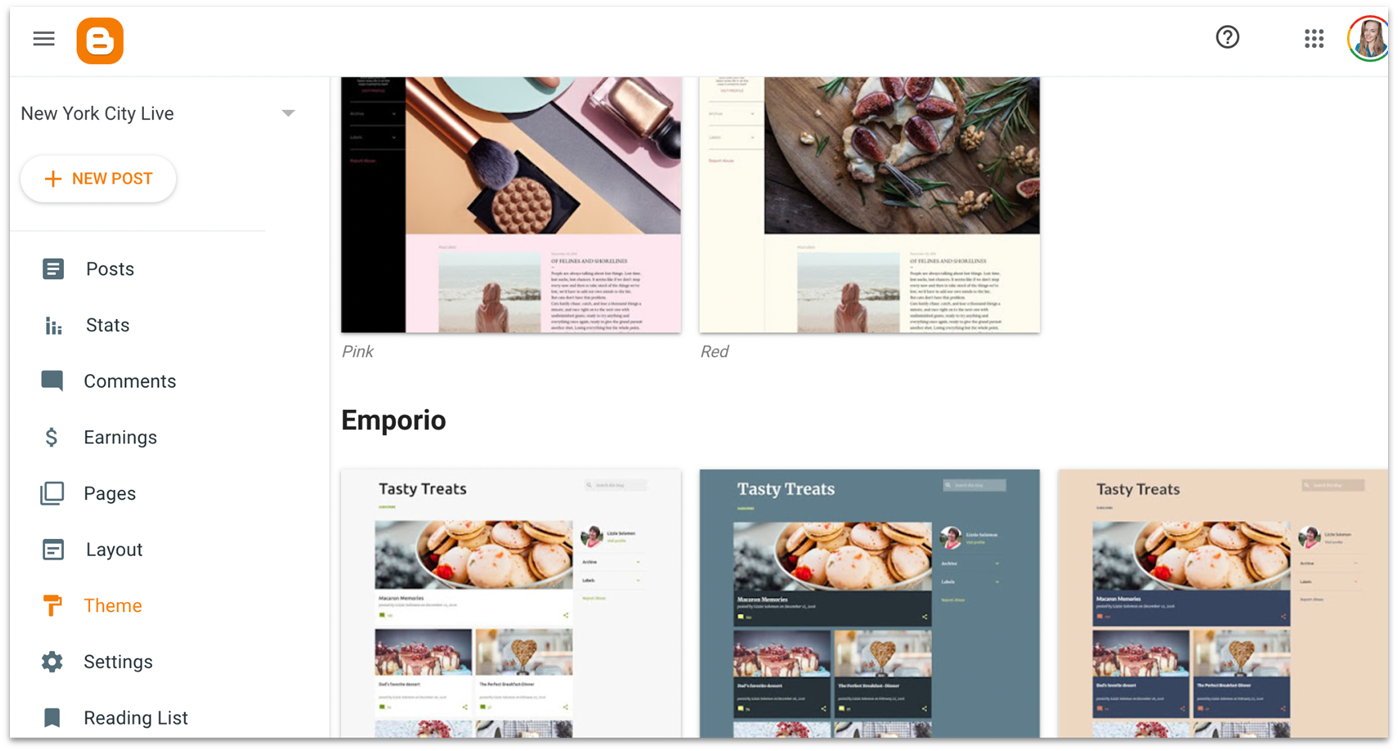Short on Time? These Are the Best Blog Builders in 2025
- Wix – All-in-one blogging platform with the most customizable templates.
- Squarespace – The most polished templates around with free marketing tools.
- WordPress.com – Powerful writing-oriented builder that’s best for managing content.
What We Look For in the Best Blogging Platforms
Blogs have specific needs, so I judged website builders and platforms based on how well they provided a combination of the following things:- Customization. The ability to customize your blog’s design and layout is crucial for making a lasting impression. The website builders on my list vary in customization flexibility, but they all let you create a unique-looking blog.
- Ease of use. The builders on this list are beginner-friendly, and many have AI tools that make it easier to produce blog content. They also have fully featured templates, which save time by including essential elements such as opt-in forms and commenting features to increase engagement.
- Blog promotion. My picks offer SEO and marketing tools. This way, your blog can be discovered on search engines and social media, and you can turn visitors into loyal readers.
- Monetization tools. The builders on my list offer various ways to earn money with a blog, including exclusive subscriptions to premium posts or newsletters, donations, and ad revenue.
- Value for money. It’s not just about being cheap – I chose blogging platforms that offer essential features like design flexibility, SEO tools, and analytics on their lower-tiered plans. Additionally, these platforms make it easy to scale without incurring massive cost increases.

Save up to 50 % on your Wix plan!
Sign up for an annual plan and enjoy the savings.
Plus get a free custom domain for 1 year!
Features
- Marketing tools. You can add forms to capture leads, send out newsletters that incorporate your blog posts, build landing pages to drive subscriptions, customize how pages look when shared on social media, and much more.
- Easy SEO. Wix’s SEO Setup checklist creates a custom plan to help you optimize your site, based on your target keywords. You can also use Wix SEO Assistant for your Wix Blog post pages and get tips on keyword usage, meta descriptions, alt-text for images, and more.
- Member’s Area. When you start your blog, you can choose to add a Member’s Area. This allows site visitors to create logins and public profiles and comment on blog posts. It’s a great way to foster a sense of community around your writing.
- Post on the go. There’s never enough time to write. But Wix’s mobile app solves that issue by letting you write and edit posts while you’re away from your computer.
| Free plan | ✔ |
| Blog templates | 115+ |
| SEO tools | Wix SEO Setup Checklist, Wix SEO Assistant, Google Search Console integration |
| Starting price | $17.00 |



Save up to 36 % on your Squarespace plan today!
Plus get a free domain for one year!
Features
- Integrate with other platforms. Squarespace’s integration with Tumblr lets you cross-post blog posts. Squarespace also lets you add your blog as a branded news channel on Apple News.
- Paywall content. On all plans, you can sell content and memberships, including blogs, videos, and online courses. Note that Squarespace charges a 9% fee on these sales, but you can cut costs by integrating the Digital Products add-on to your site.
- SEO suite. There’s an SEO checklist and SEO settings for individual pages, which help you accomplish the basics. Squarespace also integrates with Google Search Console, which lets you do keyword research to beat the competition.
- Link in Bio. This free tool allows you to create a one-page website that links to your blog, socials, videos, and more, allowing you to share all your content with a single URL.
| Free plan | ✘ |
| Blog templates | 50 |
| SEO tools | SEO checklist, SEO Report tool (for meta descriptions and alt-text), Google Search Console integration, product page optimization |
| Starting price | $16.00 |



Save up to 55 % on your WordPress plan!
Limited-time offer - Don't miss it!
Features
- Block editor. WordPress.com’s editor allows you to add a wide range of content blocks, including text, media, and social icons. You can even transform one block type into another – for example, a paragraph block into a list or a quote block.
- Newsletter and RSS support. All WordPress.com plans come with the ability to create and send newsletters. And because all WordPress.com sites have an RSS feed built in, your blog visitors can easily use it to keep up to date with your posts.
- Plugins. The highest pricing tiers get access to the WordPress plugin market, which has over 50,000 extensions. There’s a plugin for everything, from booking tools for travel blogs to automatic spam removers.
- Jetpack AI. This AI tool is integrated into the editor, helping you enhance and optimize your content for SEO. For instance, you can have AI generate titles and featured images for your posts, as well as summarize, translate, and change the tone of your text.
| Free plan | ✔ |
| Blog templates | 150+ |
| SEO tools | Basic built-in SEO tools (meta titles, sitemaps, etc), advanced tools available through plugins |
| Starting price | $4.00 |

Features
- Speed performance. Your blog loads in milliseconds, keeping readers engaged and improving your search engine rankings.
- Online store. If you plan to offer products or services, Hostinger lets you sell up to 600 products and schedule client appointments. It also doesn’t charge additional transaction fees, which can save you a lot of money down the line, especially if you’re just starting out.
- Mobile editor. Hostinger lets you create and edit your blog on your phone, so you can easily update your content on the go. You get access to nearly every feature available on the desktop version, including AI tools and analytics.
- Google Ads app. Thanks to this tool, you can set up a marketing campaign directly in Hostinger’s editor. This enables your blog to appear across Google, including Search, Gmail, and YouTube, thereby driving more traffic to your site.
| Free plan | ✘ |
| Blog templates | 9 |
| SEO tools | Basic SEO settings, AI SEO Assistant |
| Starting price | $2.99 |
5. IONOS: Best for Bloggers on a Budget

Features
- SEO Text Generator. Aside from a regular text generator, IONOS’s Plus and Pro plans let you use AI to generate page titles and descriptions for search engines. SEO is essential but time-consuming, so this can be a handy feature.
- Competitor tracking. In addition to the standard SEO tools, all plans have access to instant alerts about competitors’ Google rankings and social media activity.
- Generous storage. The entry-level plan offers 10GB of storage space, significantly more than other builders provide on their introductory plans. You’ll be able to grow your blog without needing to upgrade.
- Online store tools. You can add an online store builder to any paid plan, which includes the ability to sell digital products. As a bonus, you can integrate your store with Instagram and Facebook to sell your writing to a larger audience.
| Free plan | ✘ |
| Blog templates | No (generate your own with AI) |
| SEO tools | AI SEO Text Generator, SEO Check tool, rankingCoach integration |
| Starting price | $1.00 |

Features
- Comment systems. Like other builders on this list, SITE123 has a built-in commenting feature for blog posts. However, it also lets you integrate Facebook and Disqus comments on your blog, making it easier for visitors to start discussions on your posts.
- Multilingual sites. If you have a premium account, you can get your blog’s text automatically translated into different languages, which is great for appealing to a broader audience. Additionally, translated pages have unique URLs, which enhances your SEO.
- Free SEO tools. SITE123 gives you all the tools you need to optimize your pages for search engines, as well as tips on how to do it right. You can also use Google Search Console within the SITE123 editor to analyze your blog’s traffic.
- App market. SITE123’s App Market features approximately 100 apps that can add a lot of functionality. For example, you can install Donately to accept donations from readers.
| Free plan | ✔ |
| Blog templates | 7 |
| SEO tools | SEO Adviser tool, e-commerce SEO settings, Google Search Console integration |
| Starting price | $12.80 |
Other Notable Blogging Platforms
If the options above don’t seem like a great fit for you, rest easy. I’ve included a few more builders below for you to check out.7. Webador

8. Shopify

9. BigCommerce

10. Web.com

11. Weebly

12. Blogger (by Google)

Should I Use a Dedicated Blogging Platform?
In addition to the builders I’ve listed above, there are some platforms dedicated to blogging. These range from specialized website builders to social networking writing platforms. Below, I’ll explain how they compare to standard builders.Ghost
Ghost is a website builder that focuses solely on writers. It provides advanced tools, though some of its offerings are more complex than what most bloggers need. Ghost has some great templates, but only a few are free. Plus, each plan limits the number of followers your blog/newsletter can have – a constraint most website builders don’t have.Substack
Substack is a newsletter and blog subscription platform that many high-profile writers have adopted as their own. It’s free to use and makes it easy to charge for exclusive posts or newsletters. However, customization is very limited. And if you monetize your blog, Substack takes a hefty 10% of your subscription revenue, in addition to the roughly 3% that its payment processor (Stripe) takes.Medium
Like Substack, Medium offers the advantage of a large community of readers and writers, making it easier for your work to be discovered. But this vast community comes at a cost. Unlike Substack, where readers directly pay writers, readers subscribe to Medium, and Medium then allocates money to high-performing writers. This means you’ll only get paid if your content meets high engagement requirements.
3 Tips To Start Blogging Now
Knowing where to start when you’re new to blogging can be challenging. Here are my top tips to get you going in the right direction: 1. Pick the Right Platform for Your Goals Don’t just go for the most popular option. Choose a platform based on what matters most to you – whether that’s design flexibility (try Wix), complete control (WordPress), or a polished look (Squarespace). 2. Start With a Free Plan Six of the twelve platforms I ranked here offer free plans to get you started. You can use the free version to learn the platform’s features and create content before investing in a paid plan – you have nothing to lose. 3. Focus on Content First, Design Second While a beautiful blog is nice, your content matters more. Start writing and publishing regularly. You can always improve your blog’s design later when you have an audience and better understand your needs. This simple approach helps you avoid getting stuck in the planning phase. Your blog doesn’t need to be perfect from day one – it just needs to exist and grow with you.Monetization Opportunities
So, you’ve got your blog up and running. Now, how do you turn all that hard work into income? Whether you’re just starting out or already have a loyal audience, there are plenty of ways to make money from your blog. Here are three tried-and-true methods to get you started:Advertising Revenue
Place ads on your blog through platforms like Google AdSense. Once your blog gets steady traffic (typically 10,000+ monthly visits), this can create a passive income stream without requiring extra content creation.Premium Content & Subscriptions
Lock your best content behind a paywall or offer exclusive newsletters to paying subscribers. Platforms like Wix and WordPress make it easy to set up membership areas where readers pay monthly for access to premium posts.Digital Products
Create and sell products related to your blog’s topic, such as ebooks, online courses, or downloadable templates. Your blog content builds trust and expertise, making your audience more likely to purchase your products. This simple three-tier approach lets you start with ads while building toward more profitable options as your audience grows.These Are the Best Blogging Platforms To Achieve Your Writing Goals
There is no shortage of options when it comes to finding a platform that can build and host your blog. To choose one, consider your priorities and how much time you want to spend setting up your blog. If you want a perfect balance of ease of use and creative freedom, Wix is my top recommendation. It allows you to customize your blog extensively while still being easy to use, making it an excellent way to create a uniquely branded blog. Alternatively, if you want a sophisticated look for your blog, go with Squarespace. It features striking modern templates and free marketing tools to help you expand your readership. If you plan to publish a large volume of content regularly, WordPress.com is an excellent option. It offers robust content management tools and loads of plugins to extend your blog’s functionality.| Free Plan | Best Feature | Best For | Starting Price | ||
|---|---|---|---|---|---|
| Wix | ✔ | All-in-one builder with a built-in blog | Easy blog customization | $17.00 | |
| Squarespace | ✘ | Sophisticated blog templates | Professional look and efficient marketing | $16.00 | |
| WordPress.com | ✔ | Advanced content management system for posts | Publishing large amounts of content | $4.00 | |
| Hostinger | ✘ | AI-powered design, content, and SEO tools | Beginners looking to establish an SEO presence quickly | $2.99 | |
| IONOS | ✘ | Budget business tools | Bloggers who sell products or services | $1.00 | |
| SITE123 | ✔ | Efficient site editor with a lower learning curve | Setting up a blog as quickly as possible | $12.80 |


















